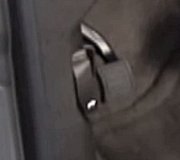Hello KMAVIATION@YAHOO.COM,
Wow. Seems like these shops aren't testing anything, just throwing parts at it. Let's see what we can come up with.
Sounds like a wiring issue to me because it is so intermittent. But then completely stops when in four-wheel drive.
I know you had the transmission completely rebuilt with all new electronics, but I have seen new sensors bad out of the box. I have also seen techs keep parts and not install them. Not saying anything about any of the places you have worked with, but we need to think about and eliminate all possibilities.
The speed sensors on the tail shaft of the transferase for the rear drive shaft is the same as the one for the forward shaft.
The front driveshaft speed sensor is a 2-wire sensor that sends an A/C voltage signal to the transfer case shift control module or (TCSCM). Speed sensor signals are used by the (TCSCM) to determine variations in speed or slippage between front and rear axles. When the selector switch is in auto-4WD position the (TCSCM) compares front and rear driveshaft speed signals. The transfer case shift control module will determine rate of transfer case clutch according to speed sensor signal.
I think when it is 4WD, the computer is using the signal from the front driveshaft because the rear signal is unusable for the speedometer.
We can switch the 2 sensors and see if anything changes.
I will include removal and installation of both sensors for you.
The image I am adding is showing 3 sensors, but my information tells me there may only be 2.
So, I am going to add instructions on how to remove all 3. I would remove the front one and remove one of the rear ones, switch them and take it for a ride. See if anything changes.
If not, put the rear one that was removed back where it came from and remove the other rear one and put in front of the transfer case and then move the front on to the other rear sensor we just moved and take it for a ride and see if anything changes.
Let me know if I can clarify anything.
Also, let see if I can get more information.
1) Is the engine light on or any other warning lights?
2) Are there any codes? Some codes won't necessarily turn the light on so if you don't have a scan tool, going to a place like AutoZone or similar will help as they will read the codes for free for you. Have them write them down. We are looking for codes that begin with P-(Powertrain) or U- (For computer data issues, like the wiring or modules.
Any past codes some of these shops have found and told you about would be helpful as well.
Since it works in 4WD but has an issue in 2WD, it is possible it is the sensor or the wiring. Either from the sensor or one of the computer data lines these modules use to talk to each other. There is actually a Technical Service Bulletin that pertains to some of your symptoms.
I will add the link so you can look it over. There is a section in it that describes some of the symptoms associated with this issue. Take a look and see if you have had any of the symptoms listed other than the ones you already told me about.
Here is the link:
https://static.nhtsa.gov/odi/tsbs/2012/SB-10043829-6448.pdf
For the fixes listed in this TSB, I think we should hold off on them for now. This is because those connectors are a pain to get out and put back in without breaking it or pushing a pin out. We also don't know how many other symptoms match this TSB yet and we don't want to cause any other issues from taking that off if we don't need to.
Once we rule out the sensors, we will need to test the wiring, starting at each sensor.
For this you will need a multi-meter and some pins to back probe the connectors so we can test them when they are plugged in.
Here is a link to a multimeter I own. Usually, a good one is over $200 but this one is accurate and easy to use:
https://www.homedepot.com/p/Klein-Tools-600-Volt-Digital-Multi-Meter-TRMS-Auto-Ranging-Temp-MM420/320822810
Takeaway's:
Seems to me like the speed sensor for the front driveshaft works fine since the problem disappears when in 4WD.
After making sure the sensors are completely fine, we will have to make sure we are getting the right voltage to the sensor and the signal going back to the computer is correct.
When the sensors are disconnected, take a look at the condition of the connector. Any corrosion or wires bent, loose, dirty anything but a clean connector that might be causing an issue.
Hopefully, we will have some codes to go off of to lead us in a certain direction as well.
Thank you,
Brendon
Images (Click to make bigger)
Wednesday, September 6th, 2023 AT 8:42 AM


































